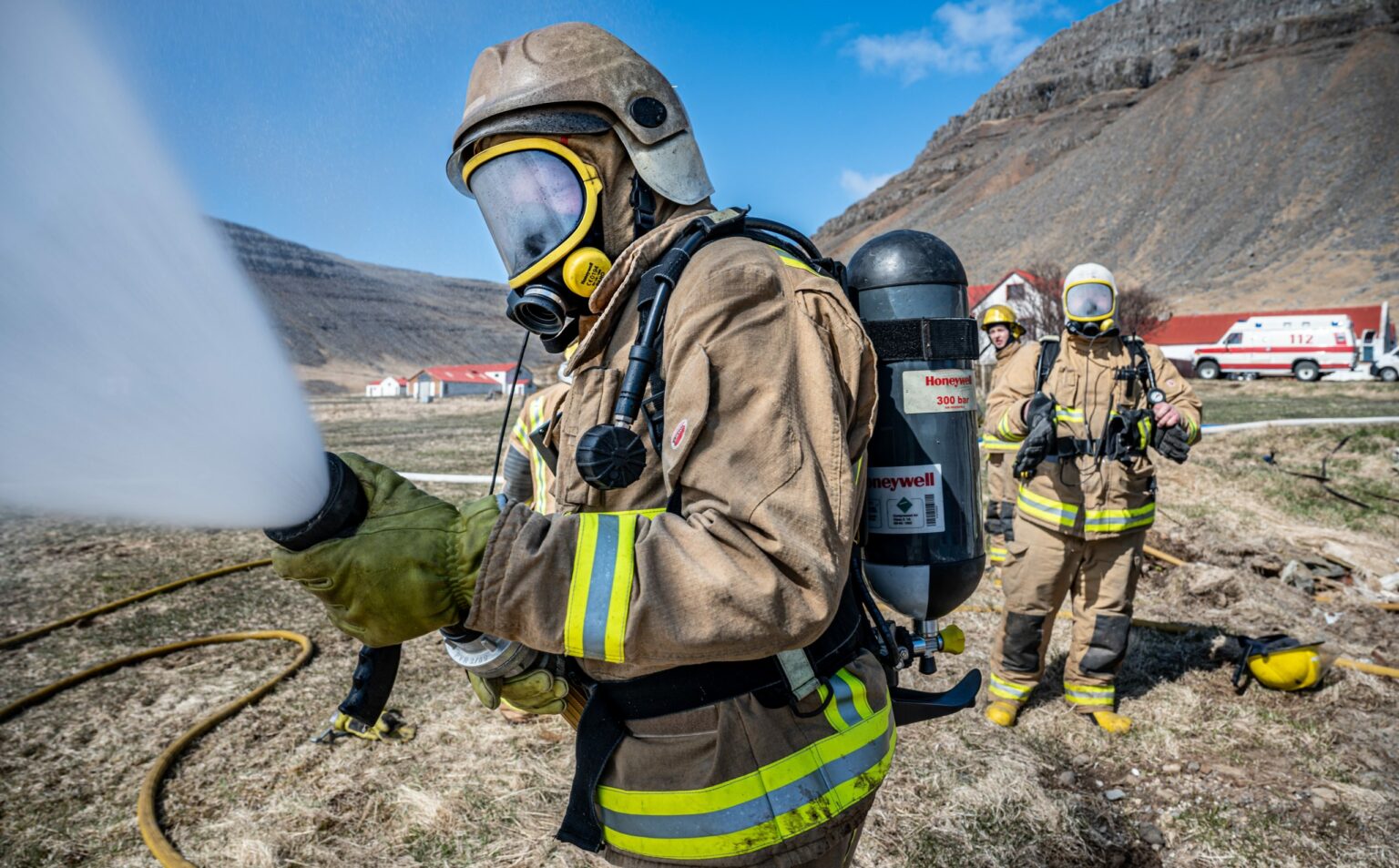PBI: Pushing the boundaries of fire protective clothing
- May 30, 2022
- 7:45 am


Iain Hoey
Share this content
Exclusive: Fabrics and materials manufacturer PBI has been pushing the boundary with its latest trademark innovation PBI LP, Ian Callaghan, Senior Director, International Marketing and Sales, PBI International tells us more
PBI is at the forefront of incredible innovation in the development of fabrics that protect firefighters against heat and flame, but are also lightweight and breathable, reducing the risk of heat stress.
The company’s range of fabrics have become the preferred choice of fire services all over the world. From USA and Europe, the Middle East to the Far East and Australasia, firefighters go to work every day protected by PBI outer fabrics.
Choosing to work with only the best fabric manufacturers in the supply chain ensures that every PBI product performs to the highest levels required in modern firefighting and rescue. The company’s close working relationship with its supply chains is a key factor in the continued investment in research and innovation which results in products that set new standards in comfort and performance. It has driven the development of an extensive range of structural firefighting outer shells designed specifically for the different needs of fire services.
The company’s product portfolio was recently expanded with the addition of, PBI LP, a trademark lightweight fibre that further enhances comfort, breathability and freedom of movement for future structural firefighting gear.
Fabric made with PBI LP, which stands for ‘lightweight performance’, is 10% lighter than other outer fabrics for structural fire gear, helping to reduce the risk of heat stress. Even though the unique PBI LP™ is lighter, it still enhances heat and flame protection and resistance to break open, without compromise.
The new lighter fibre performs incredibly well when used in outer shell fabrics, even when tested against other heavier para-aramid and meta-aramid outer shells. In independent test undertaken by BTTG in the same conditions the 180 gsm PBI LP garment outperformed an identical garment made with 220 gsm meta-aramid outer fabric. An eight second burn test was undertaken on the 2006 version of the male heat sensing manikin known as RALPH, which was developed by BTTG and conforms to ISO 13506. For the test the hands and head were not used, leaving 123 sensors on torso, arms, legs that monitor the temperature on the surface of the manikin during the test.
The BTTG tests showed 2nd and 3rd degree burn injury prediction of only 1.8% for the garment with lighter PBI LP™, compared to a much higher figure of 19.3% burn injury for the meta-aramid, despite the meta-aramid also being 40gsm heavier.
Like all PBI fabrics, PBI LP delivers excellent tensile strength and will not become brittle, shrink, or break open when exposed to flame and high temperatures. This means that the integrity of the internal layers of the garment is protected, and the transfer of any radiant heat is slower, allowing more time for firefighters to escape to safety in a situation such as a flashover. PBI’s protection from exposure to heat and flame has been proven over many years of independent testing and performance in the field.
In a Dynamic Flame Test, which is used to demonstrate the time it takes for an outer fabric to breaks down under tension, PBI LP of 180g/m2 lasted 48 seconds, while a much heavier 220/ g/m2 Para-aramid/Meta-aramid fabric lasted just 3 seconds.
PBI LP fabric is a result of PBI’s continued investment in research and development that creates new standards of firefighter protection. That development process must always take account of the balance between comfort and protection. That is why outer shells made with PBI LP join a wide range of PBI fabrics that meet the need of every situation and work effectively as an integral part of all garment design. Each product has different properties and applications, but every PBI fabric exceeds the required protection standards from heat and flame for outer fabrics.
PBI’s continued commitment to innovation and new product development is not restricted to structural firefighting solutions. Working closely with the supply chain, PBI has also developed a range of lightweight protective fabrics with increased tensile strength that is designed specifically for technical rescue, wildland and industrial firefighting.
One of the biggest challenges to firefighter safety is the risk posed by heat stress. It can cause many problems, from muscle fatigue and reduced cognitive function to cardiovascular strain and cardiac arrest. Research has shown that more firefighters dies in the line of duty from cardiac arrest than any other cause. One of the paradoxes of firefighter protection is that structural firefighting garments designed to protect the wearer from heat and flame can potentially contribute to the rise in core body temperature that triggers heat stress. That’s why it is so important that the outer shell, which has a primary role of protecting from heat and flame, is designed to mitigate the risk of heat stress.
All PBI fabrics are designed to offer maximum thermal protection from the outside, while at the same time delivering high levels of breathability and comfort to reduce the risk of heat stress. They will not become brittle, shrink or break open when exposed to flame and high temperatures, which is among the characteristics of other fabrics. This means that the integrity of the internal layers of the garment is protected and the transfer of any radiant heat is slower, allowing more time for firefighters to escape to safety in a situation such as a flashover.
In the 40 years since opening for business in Charlotte, North Carolina, PBI Performance Products has created a reputation for protection without compromise that is recognised all over the world.
This article was originally published in the May edition of IFSJ. To read your FREE digital copy, click here



